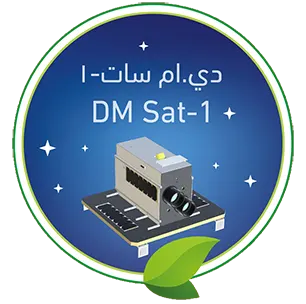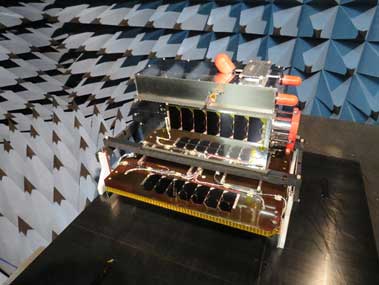DMSat-1
Aerosol and Greenhouse Gas Monitoring


Launched 22 March 2021, the DMSat-1 satellite is a 15-kilogram, 20 x 30 x 40 cm microsatellite developed by Space Flight Laboratory (SFL) for the Mohammed Bin Rashid Space Centre (MBRSC) in Dubai.
SFL’s Next-generation Earth Monitoring and Observation (NEMO) platform technology, which incorporates high performance ground target tracking capability, is a key enabler for the mission.
DMSat-1 leverages past developments at SFL for a rapidly developed mission that will incorporate two payloads. The primary payload is a multispectral polarimeter used to monitor aerosols (fine particles of liquids and solids in the upper atmosphere normally caused by man-made sources) and to correlate these aerosols to natural phenomena such as dust storms. The secondary instrument is a pair of spectrometers that will enable MBRSC to detect greenhouse gases like carbon dioxide and methane over the United Arab Emirates.
Key aerosol polarimeter specifications:
- Operates in three (3) bands: Blue (480-500 nm), Red (660-680 nm) and NIR (860-880 nm)
- Measures two polarization states: 0 degrees linear and 90 degrees linear
- 1% accuracy in measurement of degree of linear polarization
- Instrument resolution: 40 m @ 650 km
- 12-bit image resolution
- Image vignetting > 10% at edges of field of view
- MTF >10% @ imaging resolution
- SNR > 150 (>100 for NIR)
- Image size: 35 x 97 km @ 650 km
- Instrument images same target at up to 7 look angles, spaced minimum 30 secs apart.
- 1 observation run per day (average) producing up to 150 MB of data
The mission is designed to cover an area of up to 80,000 square km each day and is an important national asset for atmospheric monitoring.

